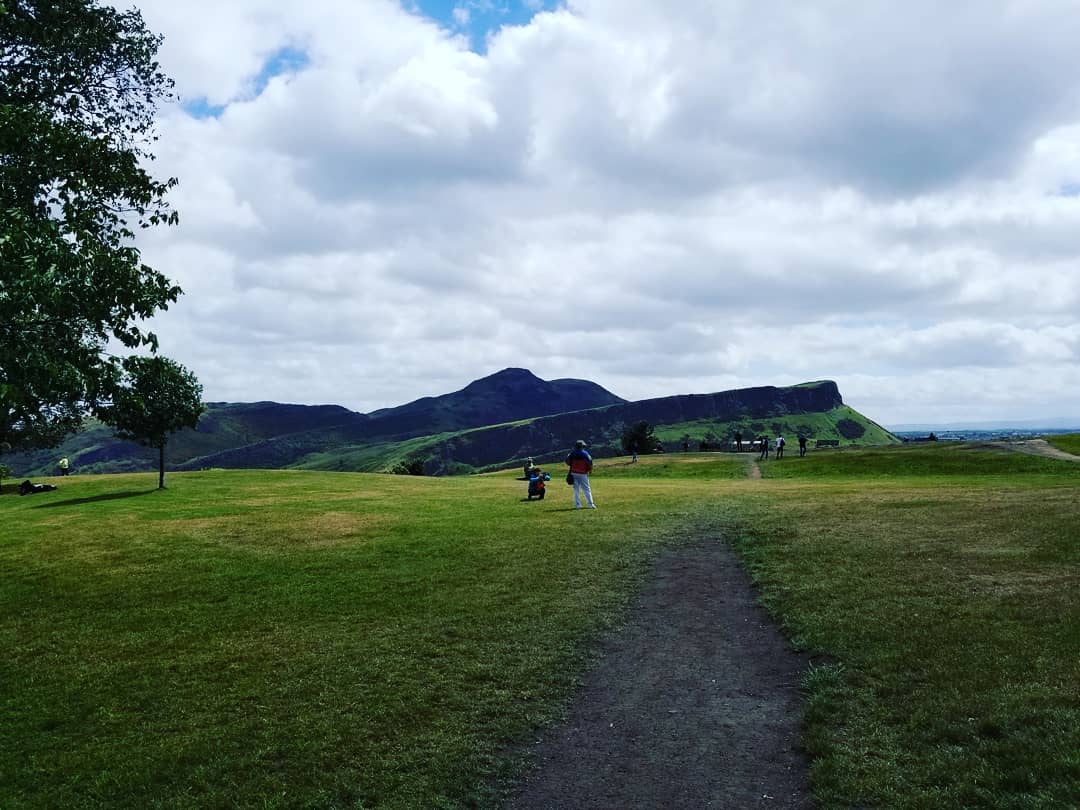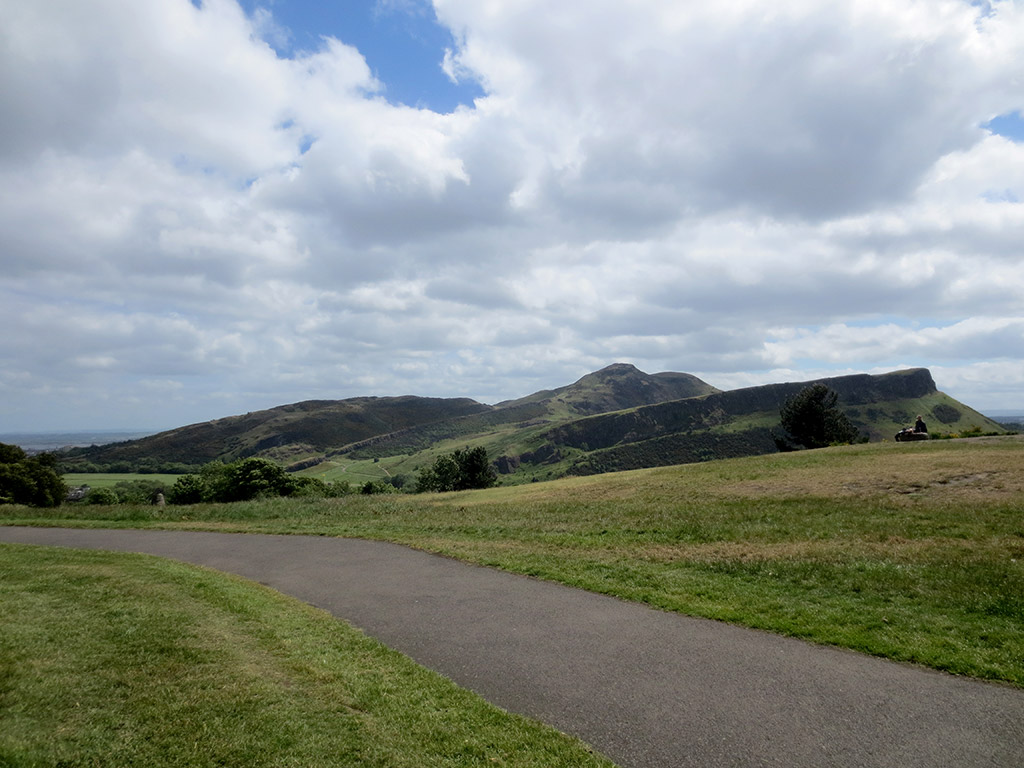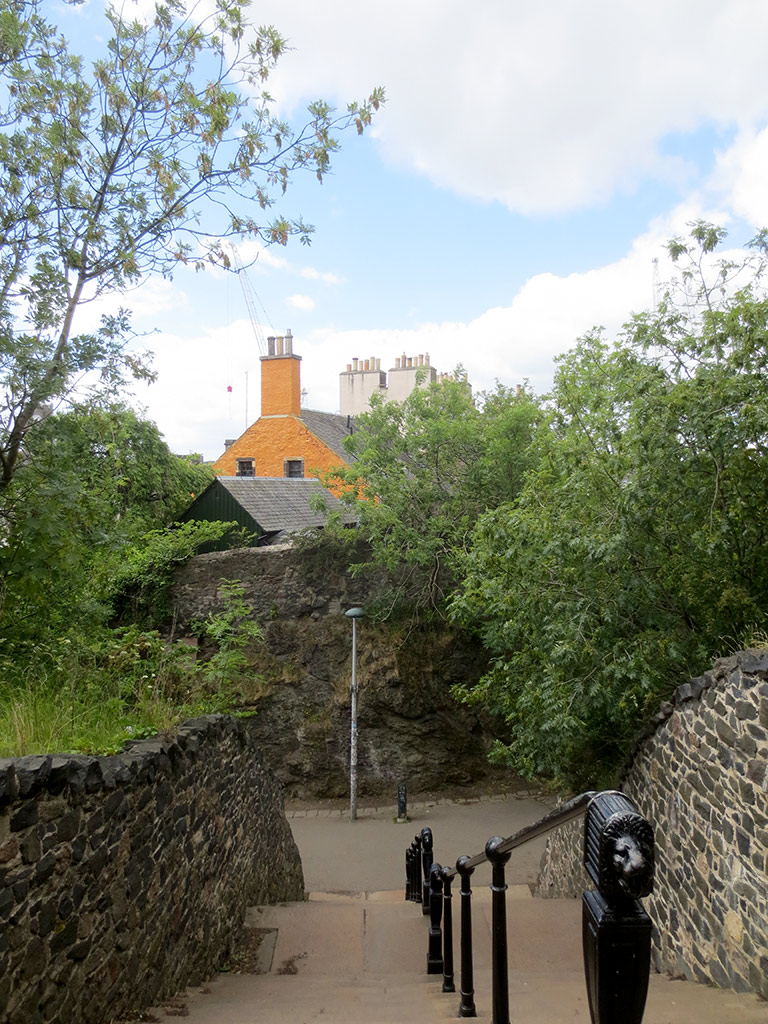Any view east down Princes Street from the center of Edinburgh terminates with Calton Hill. At just over 100 metres in height, it can be climbed with modest effort and provides nice views of the city.
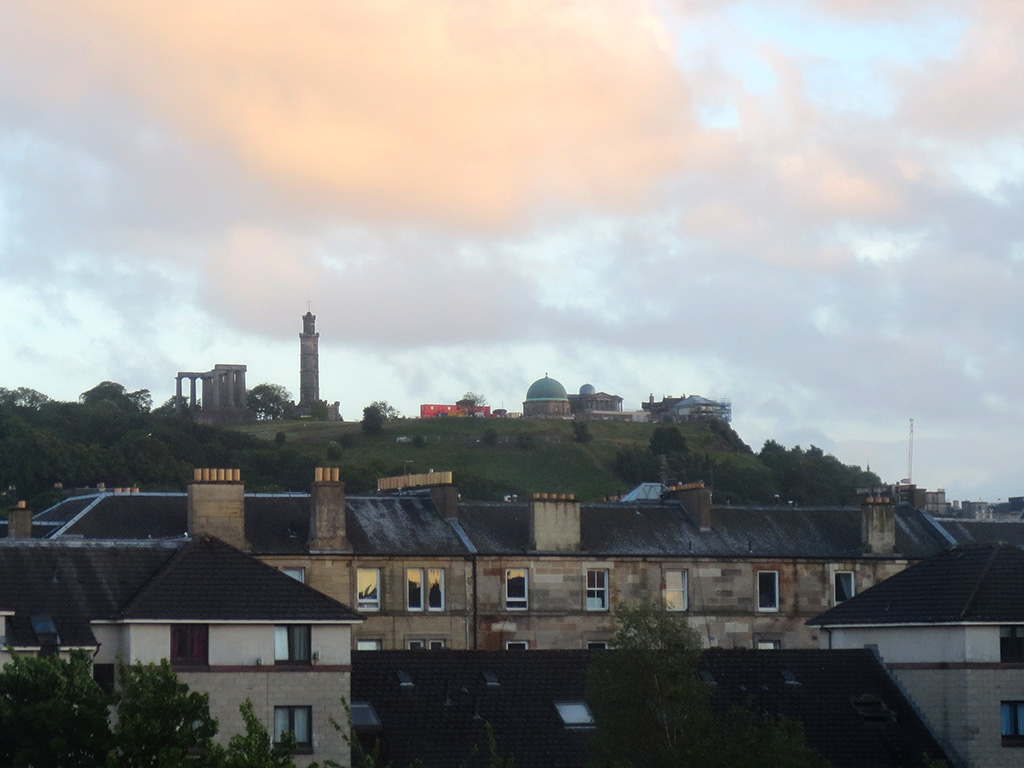
Not content to simply enjoy the natural views, Edinburghers of the past built numerous monuments on the hill. The Dugal Stewart Monument was built in 1831 to honour a Scottish philosopher.
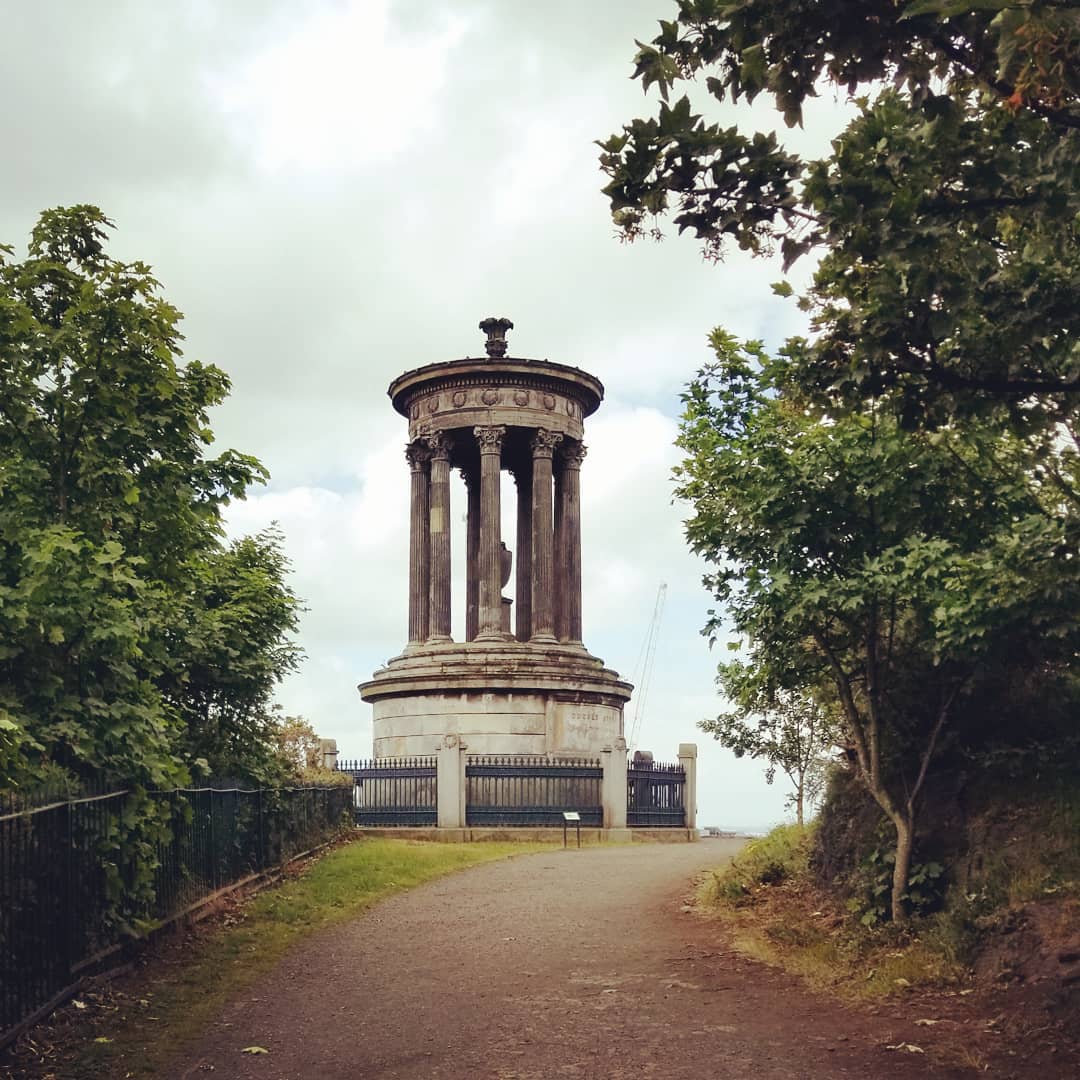
Not far away is the City Observatory, dating to 1818. Unfortunately for us most of the complex is currently closed for a massive reconstruction and fenced off from view, but this corner of the observatory was still imposing.
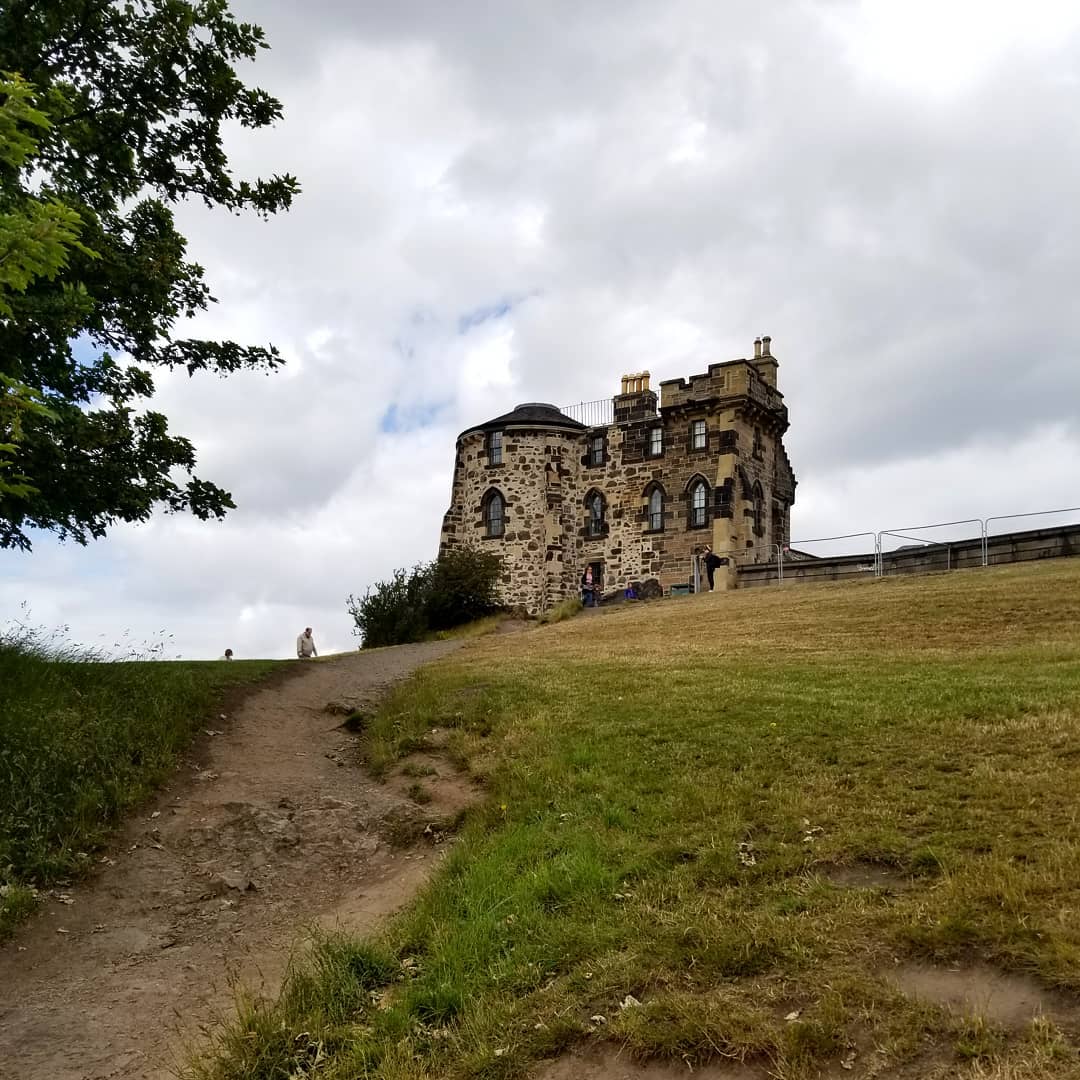
Astronomers made many important observations from this complex for decades, until the construction of the Waverly train station in the late 1800’s created too much smoke, obscuring the necessary views and forcing a replacement observatory to be built south of the city.
The tallest of the monuments on the hill is the Nelson Tower. We’ve come across numerous monuments to Admiral Horatio Lord Nelson (who led the English to victory in the Battle of Trafalgar) sprinkled around the UK and Ireland. At least this one in Edinburgh still stands, unlike its equivalent in Dublin which was destroyed by the Irish Army who did not share England’s enthusiasm for celebrating their naval victories.
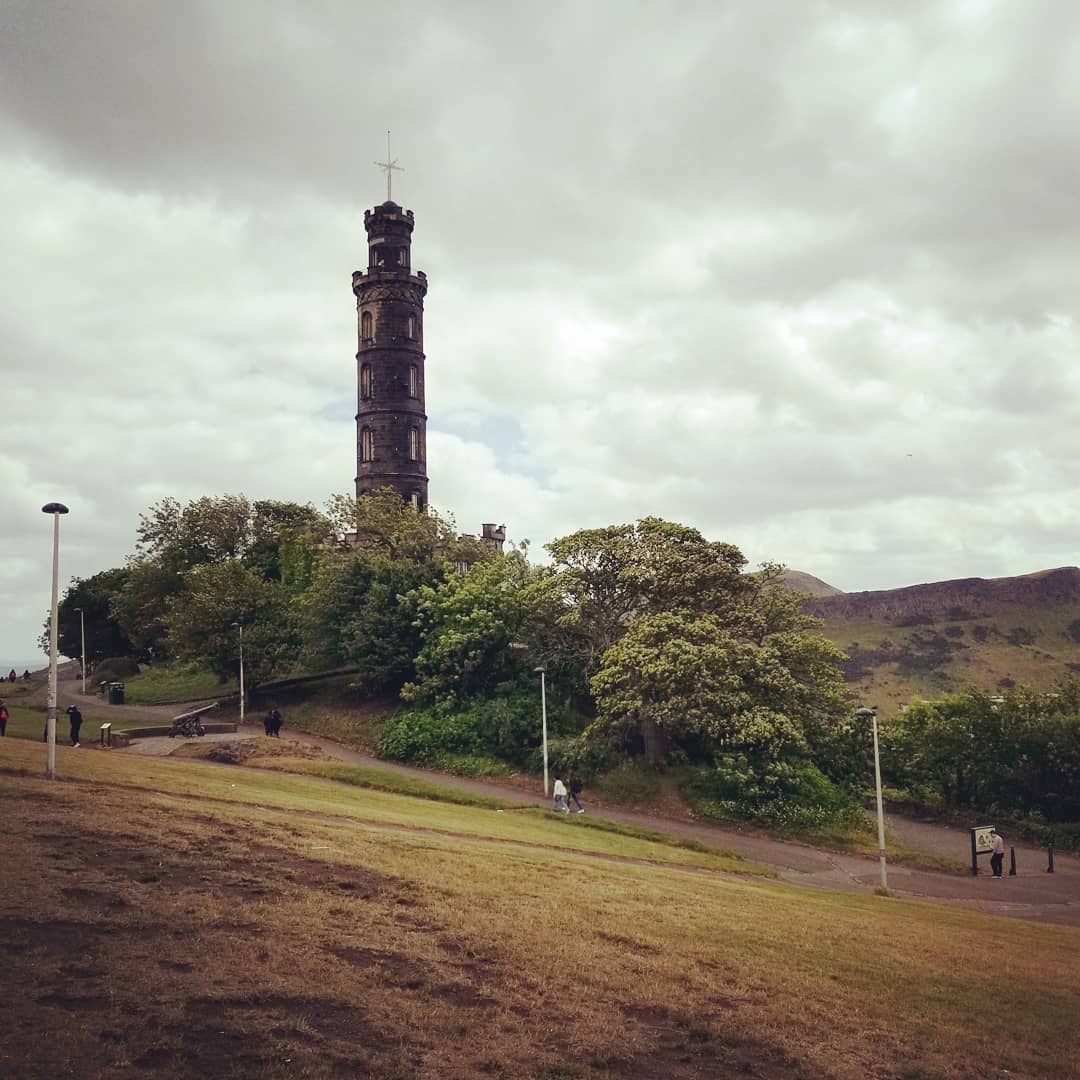
Calton Hill’s Ancient Greek Architecture theme continues with the National Monument, which gives the hill its nickname of “Edinburgh’s Acropolis”. This monument, which honours those who died in the Napoleonic Wars, was begun in 1826. The original vision was more ambitious, but the donations funding its construction ran out three years later, and this partially completed version has stood ever since. This embarrassing failure provided fodder for yet another nickname — “Edinburgh’s Disgrace”.
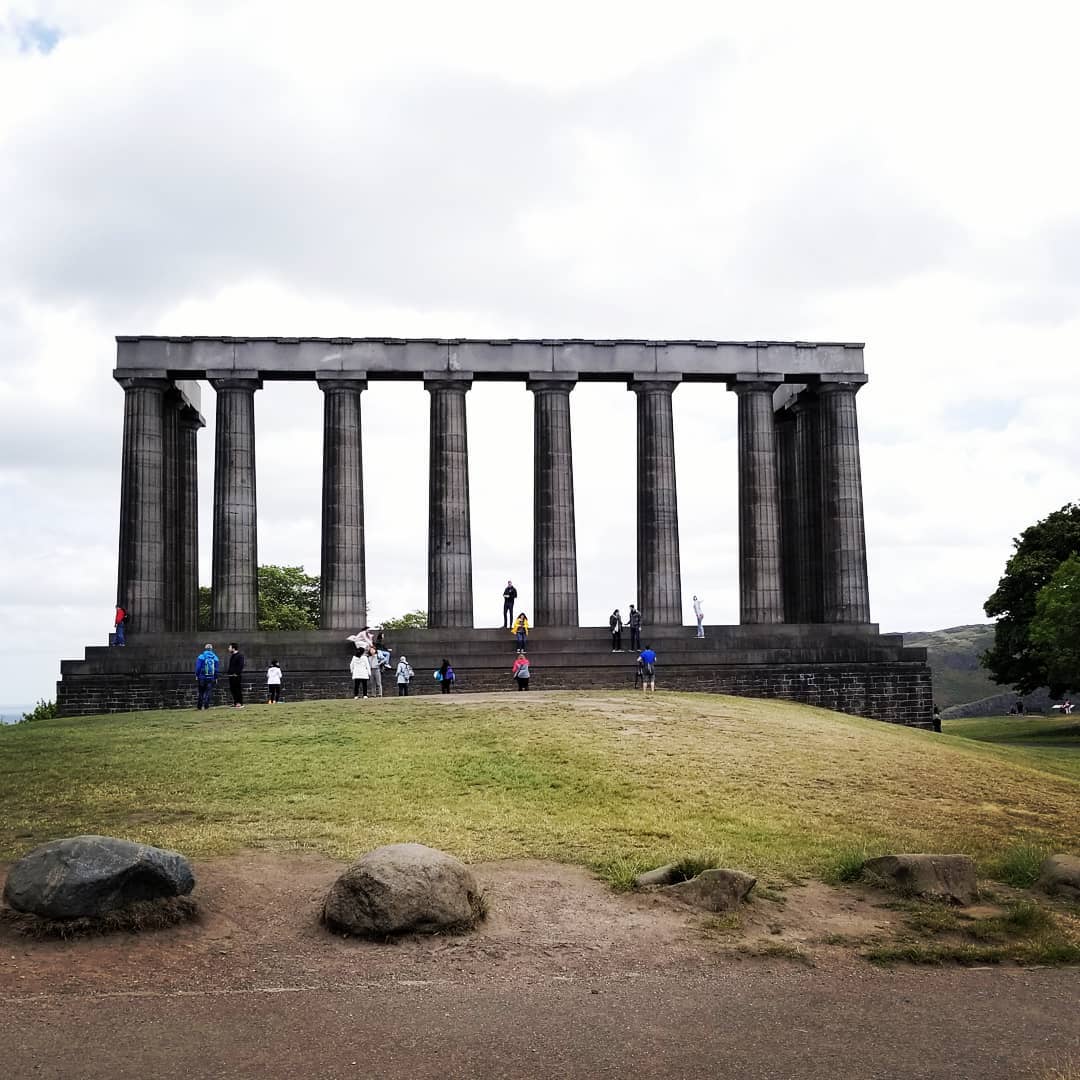
Edinburgh is a busy city jammed with tourists, but 20 minutes away, from the top of the hill, it was easy to imagine we were many miles into the country.
